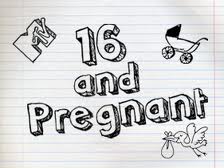I have always found the language of A. A. Milne’s Pooh stories to be one of its most endearing facets. There is something totally charming about the odd ways that the characters speak and write, especially the excessive capitalization and frequent misspellings. I think the appeal of the language quirks, for both children and adults, is probably because the speech patterns mimic those of real children.
The narrative function of Owl’s misspellings is the easiest to understand. Owl claims to be one of the most intelligent residents of the Hundred Acre Wood and Pooh often seeks his advice, but he still spells “his own name WOL” (50). Even the smallest children hearing these stories can understand that Owl is not quite as smart as he believes himself to be.
The more general misspellings seem like the way a genuine child might write the word, such as ‘heffalump’ for elephant. (‘Eeyore’ also seems to be an onomatopoeia of the sound a donkey makes, though it isn’t a misspelling). The misspellings in the dialogue are even more convincingly childlike. Christopher Robin’s misspellings on his signs are understandable, given that he is five, but Milne carries these misspellings into his writing of dialogue, when he presumably could correct them. Milne is therefore privileging entertainment over education in his stories: rather than correcting his characters, he respects their juvenile education and reports it honestly, without thought to his young readers perhaps learning to spell words incorrectly.
Finally, my favorite part of the quirky language of Pooh is the frequent capitalization. Pooh and his friends capitalize words and phrases to emphasize them: “Bear of Very Little Brain,” “being Useful,” “Not like Some” (50, 90, 50). To me, it seems to hearken back to the earliest parts of childhood, when we were first learning words and their meanings. Milne’s characters speak carefully and deliberately, and the capitalization supports this. They have recently learned to speak, and are still exploring language, words, and meanings. Language has not yet become a casual form of communication; it is still a Careful Way of expressing Oneself.
Finally, and interestingly, some dictionaries have actually incorporated some of the words that Milne created: “Eeyorish” is defined as “pessimistic and gloomy.”














